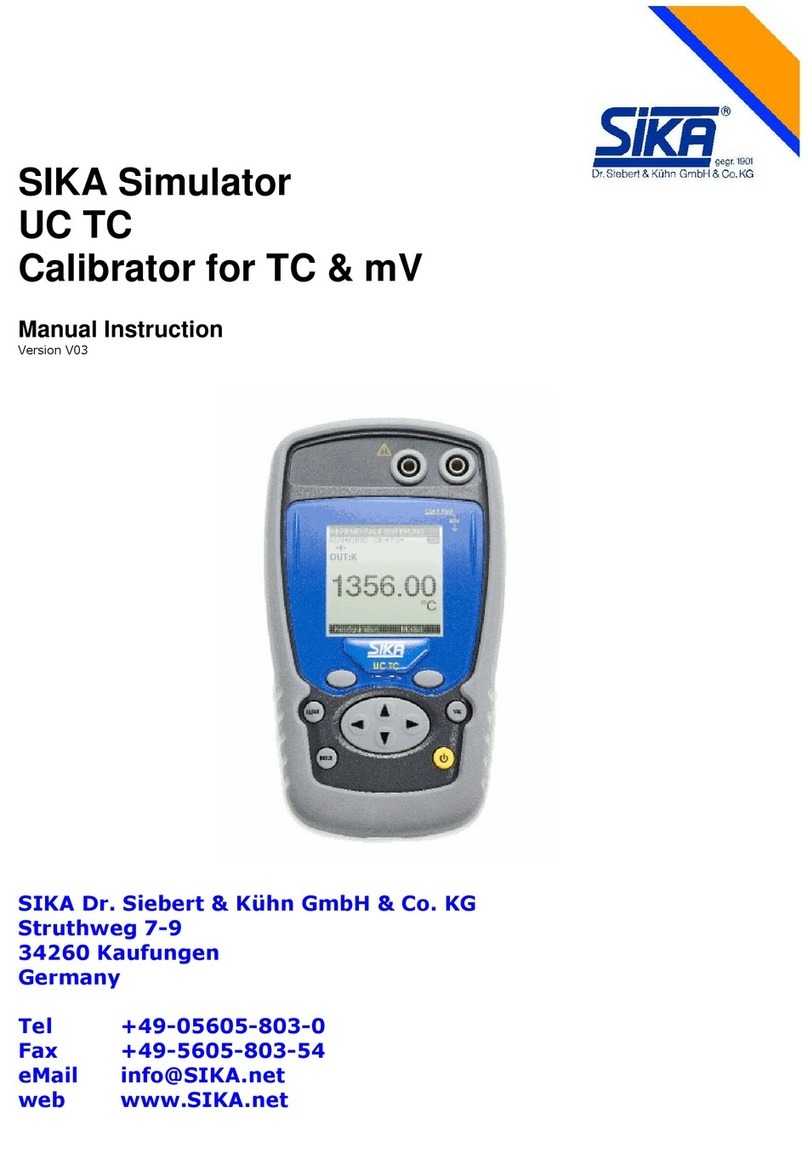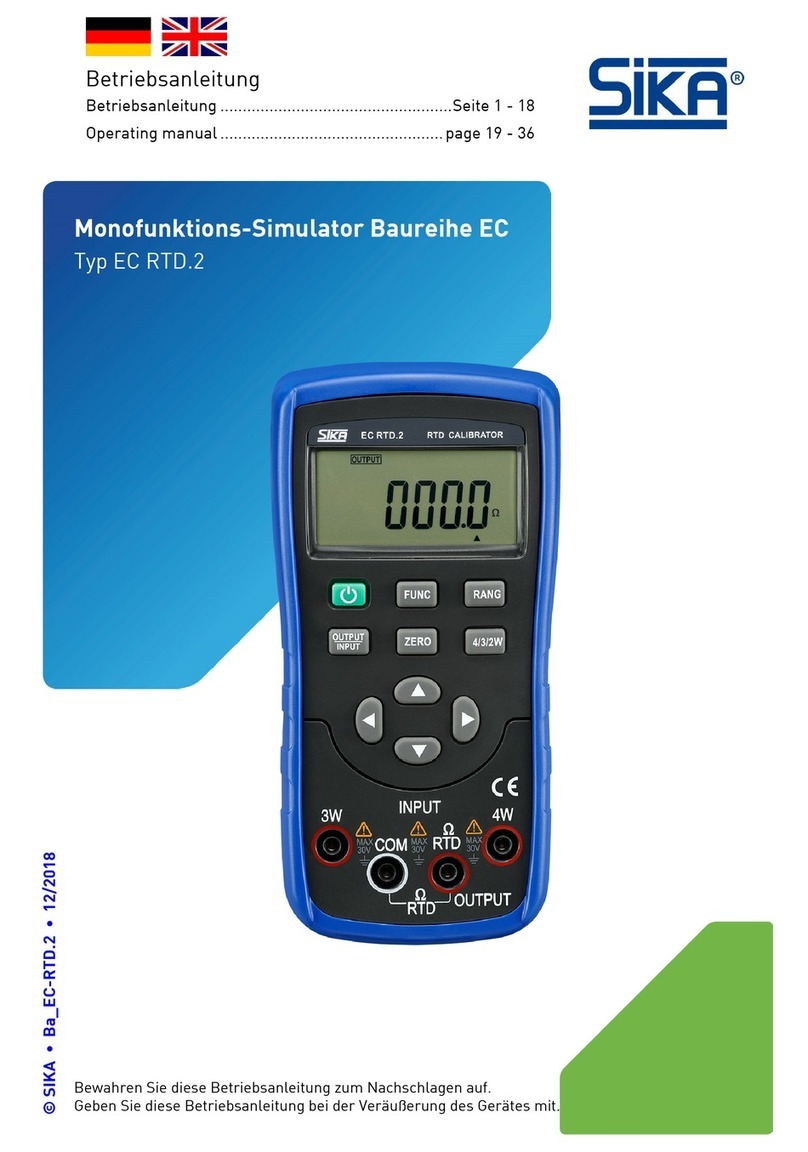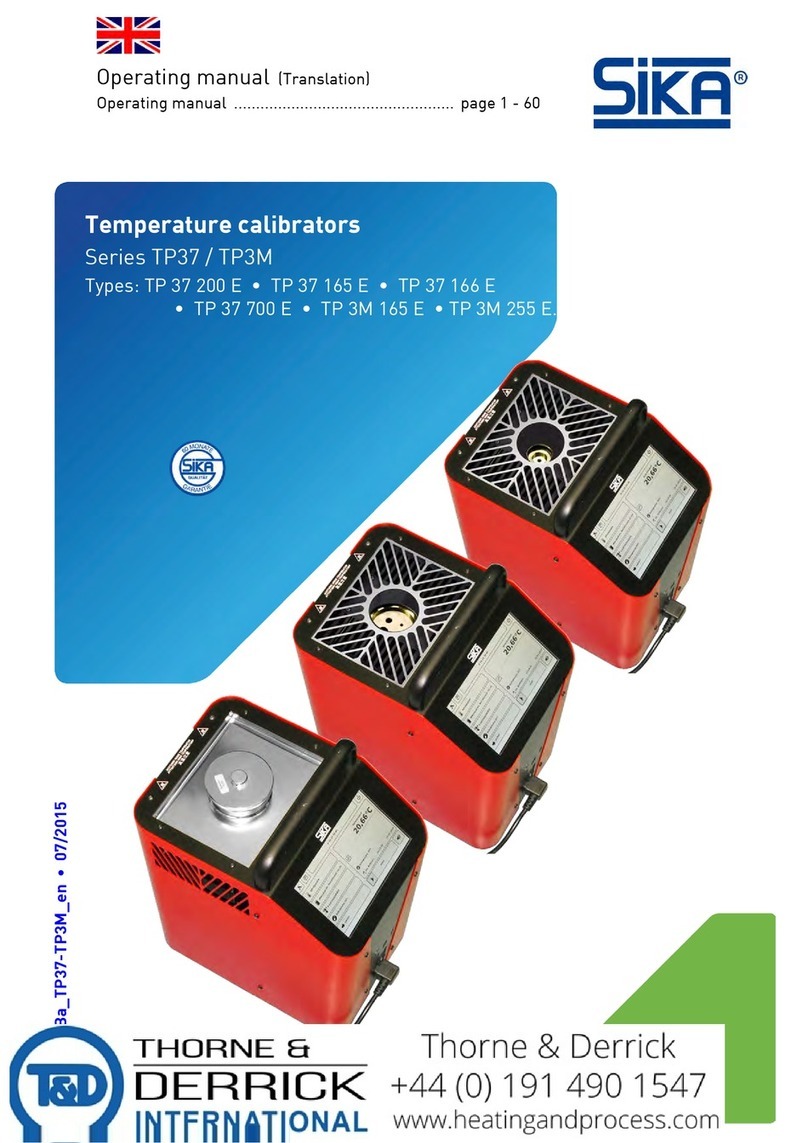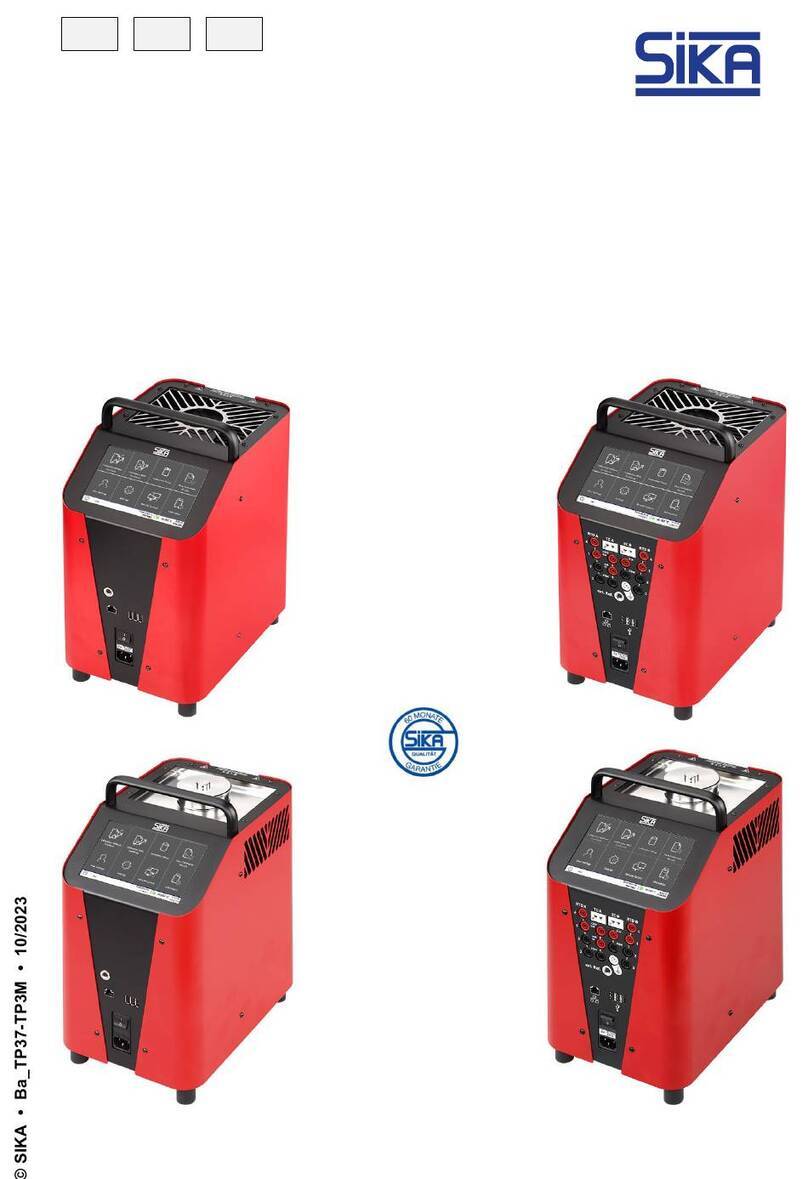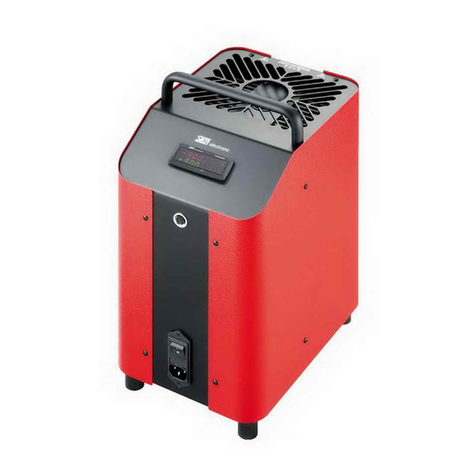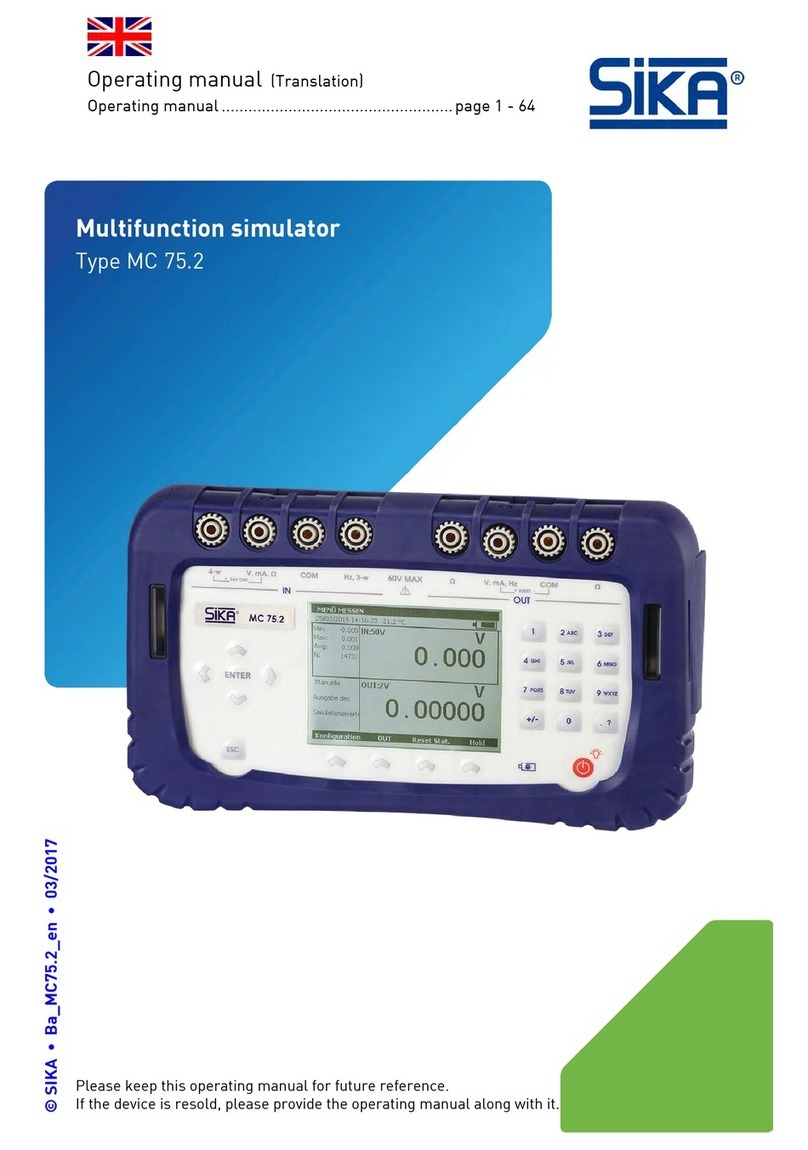SIKA Dr. Siebert & Kühn GmbH & Co. KG, Struthweg 7-9, 342 0 Kaufungen, Germany 4/33
Tel +49-5 05-803-0, Fax +49-5 05-803-54, eMail info@SIKA.net, web www.SIKA.net
Contents
A.
G
ENERAL
............................................................................................................................................................. 5
A.1
Introduction.................................................................................................................................................. 5
A.2
The instrument.............................................................................................................................................. 5
A.3
Safty..........................................................................................................................................................
A.3.1
Conformity with safety standards........................................................................................................................
A.3.2
Climate conditions .........................................................................................................................................
A.3.3
Disposal of instrument at end of life.....................................................................................................................
A.3.3.1
Waste produced by the instrument .............................................................................................................
A.3.4
Instrument destruction procedure ....................................................................................................................... 7
A.3.5
Instructions .................................................................................................................................................. 7
A.3.6
Taking measurements..................................................................................................................................... 7
A.3.7
Faults and abnormal stresses............................................................................................................................ 7
A.3.8
Definitions ................................................................................................................................................... 8
A.3.8.1
Definition of category and pollution level....................................................................................................... 8
A.3.8.2
Symbols used ...................................................................................................................................... 8
A.4
Maintenance ................................................................................................................................................ 8
B.
Using the instrument ............................................................................................................................................... 9
B.1
Putting into service......................................................................................................................................... 9
B.1.1.
Keypad................................................................................................................................................... 9
B.1.2.
Terminals...............................................................................................................................................10
B.1.3.
USB connector ........................................................................................................................................11
B.1.4.
Screen ..................................................................................................................................................11
B.1.5.
Starting after powering on ...........................................................................................................................13
B.1.6.
Operating modes......................................................................................................................................13
B.1.6.1.
Voltage (DC) measurement .....................................................................................................................13
B.1.6.2.
Current (DC) measurement .....................................................................................................................13
B.1.6.3.
Voltage (DC) transmission ......................................................................................................................14
B.1.6.4.
Current (DC) transmission.......................................................................................................................14
B.1.6.5.
Continuity ..........................................................................................................................................14
B.1.6.6.
Maximum permissible electrical characteristics (values not to be exceeded)...........................................................14
C.
Programming the modes .........................................................................................................................................15
C.1.1.
Voltage (DC) measurement .........................................................................................................................15
C.1.2.
Current (DC) measurement .........................................................................................................................1
C.1.3.
Auxiliary functions at current measurement ......................................................................................................18
C.1.3.1.
Passive or active mode ..........................................................................................................................18
C.1.3.2.
Scale................................................................................................................................................18
C.1.3.3.
HART ...............................................................................................................................................19
C.1.4.
Voltage or current (DC) transmission..............................................................................................................20
C.1.4.1.
Manual editing.....................................................................................................................................20
C.1.4.2.
Editing with arrows ...............................................................................................................................21
C.1.4.3.
Incremental editing ...............................................................................................................................21
C.1.4.4.
Single ramp editing ...............................................................................................................................21
C.1.4.5.
Cyclic ramp editing ...............................................................................................................................22
C.1.4.6.
Predefined editing as valve test (Current transmission) ....................................................................................22
C.1.4.7.
Predefined editing as % FS (Current transmission).........................................................................................23
C.1.5.
Ramp configuration...................................................................................................................................23
C.1.5.1.
Incremental signal configuration................................................................................................................23
C.1.5.2.
Single ramp signal configuration ...............................................................................................................24
C.1.5.3.
Cyclic ramp signal configuration................................................................................................................2
C.1.6.
Continuity function ....................................................................................................................................27
D.
Parameter settings ................................................................................................................................................28
D.1
Adjusting the contrast ....................................................................................................................................28
D.2
Adjusting the date and time .............................................................................................................................28
D.3
Preferences menu ........................................................................................................................................29
D.3.1
Adjusting the filtering .....................................................................................................................................29
D.3.2
Adjusting display resolution .............................................................................................................................29
D.3.3
Adjusting the lighting duration...........................................................................................................................29
D.3.4
Adjusting the key beep ...................................................................................................................................30
D.3.5
Adjusting the language...................................................................................................................................30
D.4
Maintenance menu .......................................................................................................................................30
D.5
About menu ...............................................................................................................................................30
E.
Technical Specifications..........................................................................................................................................31
E.1.
Measurement function....................................................................................................................................31
E.1.1.
Voltage (DC) measurement .........................................................................................................................31
E.1.2.
Current (DC) measurement .........................................................................................................................32
E.1.3.
Continuity function ....................................................................................................................................32
E.2.
Transmission function ....................................................................................................................................32
E.2.1.
Voltage (DC) transmission...........................................................................................................................32
E.2.2.
Current (DC) transmission...........................................................................................................................32
E.3.
Power supply - Autonomy ...............................................................................................................................33












